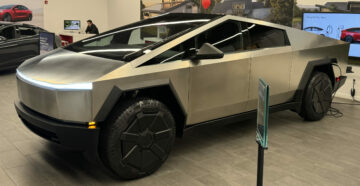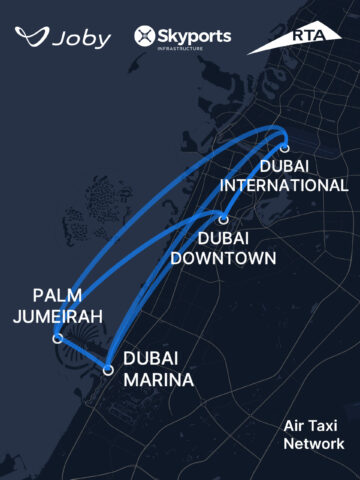In an interesting article by EVANNEX, the author shared that Tesla’s onboard AI chip is smarter than the USAF’s F-35 fighter jet, among other historic vehicles that are powered by computers. Although the Tesla Model S Plaid isn’t as fast as a fighter jet (yet), the current generation of Tesla’s vehicles are leaving the most advanced military and space-exploration vehicles in the dust in terms of computer power, the article noted.
Tesla’s onboard AI chip is smarter than the USAF’s F-35 fighter jet@elonmusk https://t.co/SMi2U5SlOK
— ⚡️Tesla Owners Online (@Model3Owners) May 22, 2021
It should be noted that once Tesla achieves full self-driving (FSD) capability, it will require some serious computing power. This is why Tesla has been upgrading its computer systems steadily. EVANNEX took a quick dive into the history of Tesla’s computer chips.
In the earlier versions of Tesla’s Autopilot, the system relied on chips from Nvidia. Back when Tesla launched Autopilot 2.0, Tesla noted that the computer had the computing power of around 150 MacBook Pros. Then in 2019, Tesla replaced that chip with a new one that Tesla itself designed. This chip delivers 21 times the performance of the previous chip. So, 150 MacBook Pros multiplied by 21 (= 3150 MacBook Pros) with the added bonus of a lower cost while requiring just a bit more power.
The new chip, manufactured by Samsung, has two neural network arrays, which are both capable of 36 trillion floating-point operations per second (teraflops). Duke University describes a flops as “some calculation that combines the bits in two 64-bit computer words to produce a new 64-bit computer word.”
This is what it takes to handle Tesla’s computing-intensive task of full self-driving when the software is ready. Its latest FSD computer includes two of the chips for the sake of redundancy, EVANNEX pointed out.
Tesla’s AI Chip vs. Historic Computers
Out of curiosity and inspired by the product, Select Car Leasing compared the computer power of Tesla’s AI chip to some pretty historic computing devices.
Apollo 11
The computer that powered the Apollo 11 mission only delivered around half a million operations per second. This is half of a megaflop.
Tesla’s twin chips and combined 72 teraflops have almost 150 million times more computer power than the Apollo 11 computer that took astronauts Armstrong, Aldren, and Collins to the moon.
Let that sink in for a moment. The computer power of Tesla vehicles is that much more than what NASA was able to use to send people to the moon. And there’s more.
The Perseverance rover that recently landed on Mars back in February is controlled by a computer with two teraflops of power. As EVANNEX put it, Tesla’s FSD hardware could pretty much power at least 36 Mars rovers.
U.S. Air Force F-35
Tesla’s FSD system has 180 times the computing power of the US Air Force’s most advanced fighter jet, an F-35.
IBM Deep Blue
In 1997, IBM’s Deep Blue supercomputer made history when it defeated chess grandmaster Garry Kasparov. This was the first time that Kasparov conceded defeat in his career. Tesla’s FSD chip has 60,000 times the potency of the IBM Deep Blue supercomputer.
Other Comparisons
The Hubble Space Telescope, Playstation 4, Xbox Series X, Samsung Galaxy S1 Ultra, and Apple Mac Pro all have less computing power than Tesla’s FSD microchip. The only thing on the list that has more computing power than Tesla’s FSD microchip is the human brain.
The human brain uses 1 quadrillion operations per second. Duke University explained that this is pretty standard, as the human brain greatly exceeds digital computers in computation per volume per watt. The article noted that some estimates showed that the computational capability of the most powerful digital computers is now roughly comparable to the computation capability of a single adult human brain.
Supercomputers are able to carry out around 100 petaflops, while a human brain performs an equivalent of 100-1000 petaflops of information processing. The paper from Duke also goes into the differences between the power and volume requirements of the two computing systems (brains and supercomputers) and seeks to understand more. You can read that document here.
Some Additional Thoughts
When reading both the EVANNEX article and the analysis from Select Car Leasing, my mind was a little blown. The idea of a car having more computing power than fighter jets, NASA rovers, and rockets is something to ponder. Cars are everywhere and for them to become as intelligent as the computers that powered the Apollo mission shows just how far such technology has come.
Imagine driving a car with more than enough power to send someone to the moon.

- 000
- 100
- 11
- 2019
- Additional
- Advertise
- AI
- Air Force
- All
- among
- analysis
- apollo
- apollo 11
- Apple
- around
- article
- autopilot
- Bit
- brains
- car
- Career
- cars
- Chess
- chip
- Chips
- cleantech
- Cleantech Talk
- Collins
- Compute
- computers
- computing
- computing power
- curiosity
- Current
- Devices
- digital
- driving
- Duke
- estimates
- EV
- FAST
- First
- first time
- full
- gif
- Guest
- Hardware
- history
- How
- HTTPS
- Hubble
- Hubble Space Telescope
- IBM
- idea
- information
- IT
- latest
- List
- mac
- macbook
- manufactured
- mars
- mars rovers
- Military
- million
- Mission
- model
- Moon
- Nasa
- network
- Neural
- neural network
- news
- Nvidia
- online
- Operations
- Other
- owners
- Paper
- Patreon
- People
- performance
- perseverance
- perseverance rover
- playstation
- Playstation 4
- podcast
- potency
- power
- Pro
- Product
- Reading
- Requirements
- rover
- Samsung
- self-driving
- Series
- So
- Software
- solar
- Space
- space telescope
- supercomputer
- supercomputers
- system
- Systems
- tech
- Technology
- telescope
- Tesla
- time
- Ultra
- university
- us
- Vehicles
- volume
- words
- X
- xbox
- Xbox Series X









